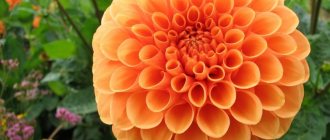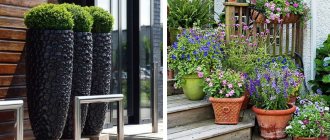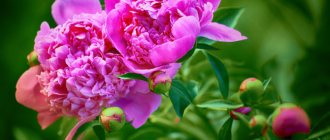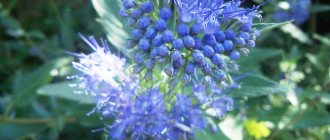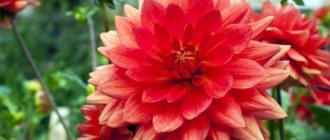Many gardeners grow this amazing flower in their flower beds. If you look at different photos of dahlia, you will notice that the plant has a wide range of colors and a variety of shapes. These flowers can become a decoration for any garden plot. To get lush bushes, you should know how to grow them.
The dahlia, which was brought to European countries from Mexico back in the 17th century, looks bright in flower beds. The name of the plant was given in honor of the famous ethnographer Johann Georgi. The German scientist worked and lived in St. Petersburg.
The huge variety of forms of this flower is amazing. It is used for borders and used as single plants. Elegant flowers in flower beds look amazing.
Features of cultivation
These flowers delight us with their dazzling beauty. They do not require special care; even novice gardeners can grow them. There are several ways to propagate this amazing flower. It can be planted by seeds, cuttings, or by dividing tubers.
Any soil is suitable for these plants; they are watered infrequently, but abundantly. Dahlia loves sunny, spacious areas; it also grows well in partial shade. The plant should not be planted in places where there is a draft and there is an excess of moisture. The flower is afraid of cold weather, so planting is carried out when the threat of frost has already passed.
The soil is dug up in the fall, and the soil is well fertilized to provide the future plant with all the necessary nutrients. With the arrival of spring days, the selected area is dug up, and gardeners add bone meal to the soil.
This flower is not grown in areas where asters previously grew. It is also better not to plant them where there are plants that are infected with fungus. Dahlias can also suffer from this disease.
If the time has come for planting, the tubers are divided. To separate, use a knife to separate the tuber. This is a simple and commonly used method of propagation. This operation can be repeated if the size of the planting material allows this. The cut areas are treated with potassium permanganate, brilliant green or crushed coal.
After this, they must be dried. Dry roots are removed using pruning shears; damaged parts should be treated with brilliant green. Then the dahlias are planted in pots or open ground. The distance between holes must be at least 0.5 m.
Planting dahlia directly into the soil is possible if it has completely warmed up. Then the plant will not suffer from the cold. If you purchase a tall variety, you should take care of support in advance.
Transitional
These dahlias do not have clearly defined characteristics of any particular group. Experts also call them “mixed”.
The Akita variety, although tall, does not require garter.
The Vancouver variety is characterized by long flowering and cold resistance.
Flowers of the Spider Woman variety have long and curled petals, similar to the legs of a spider.
The Rebekka's World variety is distinguished by lush flowering and grows best in a sunny place.
The Procyon variety is very bright and beautiful, the flowers are large, up to 25 cm in diameter.
Caring for dahlias
The flower must be watered systematically. The soil should be moistened to a depth of 30 cm. Increased humidity can lead to the death of the plant. Feeding is carried out every two weeks so that the plant develops well.
After the sprouts appear, you need to water them with manure, which is diluted with water 1:10. If the long-awaited buds appear on the plant, you should apply fertilizers that include potassium and superphosphate. If the soil was well fertilized before planting, then fertilizing may not be necessary.
The flowers have a fragile stem that can break in windy weather. To avoid this trouble, it is better to tie up the plant. The support can be wooden or metal pegs. This is taken care of even when planting the plant.
Pruning is necessary to obtain large buds. No more than 2 buds are left on one peduncle. Fading heads should be removed immediately so as not to inhibit the development of new flowers.
The flower is susceptible to many diseases; various pests can also harm it. You can protect the shoots using special products that are easy to purchase in specialized stores.
Medicinal properties of the plant
Dahlias can boast of having medicinal properties. For this reason, they can be classified as medicinal plants. The flower contains substances that help the human body get rid of toxins and heavy metals. By taking a decoction prepared from flowers and leaves, you can normalize the functioning of the thyroid and pancreas. For medicinal purposes, flowers that have small buds are mainly used. Dahlias are very beneficial for those who suffer from cardiovascular diseases.
The leaves and roots contain a large amount of amino acids and polysaccharides. It is recommended to take this remedy as a preventive measure for diabetes. In addition, dahlias help relieve inflammation in the joints, alleviating the patient’s condition. Inulin is extracted from dahlia tubers. It is widely used for fructose production. Fructose is a natural substitute for sugar and starch. This component is very valuable for people who suffer from diabetes.
Garden dahlia is widely used in cosmetology. If the crushed root of the plant together with honey is applied to the roots of the hair, the hairstyle will become more voluminous over time. With regular treatment, your hair will gain shine and strength. Fresh dahlia leaves are used to treat acne. You can make an excellent anti-aging mask from the rhizome.
Dahlia leaves have a beneficial effect on the skin on cuts and scrapes. They must be applied to the painful area, carefully wrapped with a band-aid and removed after 20-30 minutes. The leaves will help relieve inflammation on the skin and reduce pain. Dry leaves help cope with boils and suppuration.
The flower helps to alleviate the condition of a person with such a common disease as arthritis. To obtain an effective remedy in the fight against this disease, it is necessary to mix the crushed dahlia tuber with horseradish, bodyaga, and date grains. Vodka is added to the mixture in a 1:1 ratio. It should sit for 12 hours. The prepared mixture must be applied to the inflamed lesions. The product must be used within a week, in the morning.
Tuber storage
Dahlia does not tolerate low temperatures, so its tubers are dug up for the winter. In spring, the plant is planted again in the ground. You need to dig up tubers in the fall carefully so as not to damage them. After completing this procedure, the tubers are cleared of soil, and small roots are removed.
You can rinse the dug planting material under a slight pressure of water. Afterwards it is dipped into a weak solution of potassium permanganate. This is done to clean the tubers from harmful microorganisms.
Then they are dried in the sun or brought into a warm room, sprinkled with sawdust and placed in boxes. The best temperature for storing dahlias is 3-5 °C.
Use in landscape design
Annual low-growing mini-dahlias and compact varieties are perfect for growing in flower beds and decorating borders. Such plants look very decorative on gentle slopes on the south side and as potted plants, which allows you to beautifully decorate terraces, balconies and loggias.
Variety of varieties
Flowers are distinguished depending on their shape and the structure of the inflorescences. The most popular varieties of dahlias:
Simple flowers with one row of petals Yellow Hammer, Princess Marie Jose, Orangeade.
Anemone-like plants will become a bright accent in the garden. Plain types are common, as well as varieties with a core painted in a contrasting color.
Collared dahlias are especially popular in France. Their inflorescences consist of large reed flowers, the outer petals of which are painted a different color.
The peony type is distinguished by semi-double inflorescences with two or more rows of petals located around a yellow core.
Decorative dahlias have wide wavy petals; they will give the flowerbed an extravagant look.
Today there are many varieties of these flowers. Among the huge assortment, you can find the right type that will occupy a special place in the flowerbed, complement the composition, make it more expressive and attractive.
Diseases and pests
| Leaf spot Symptoms:
Treatment:
| |
| Gray rot Symptoms:
Treatment:
| |
| Aphids or Aphididae Symptoms:
Treatment:
|
